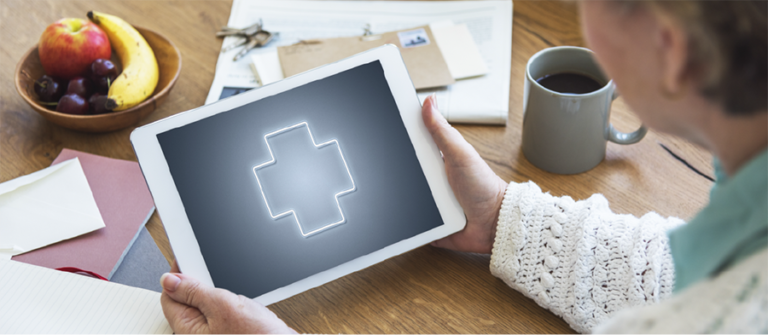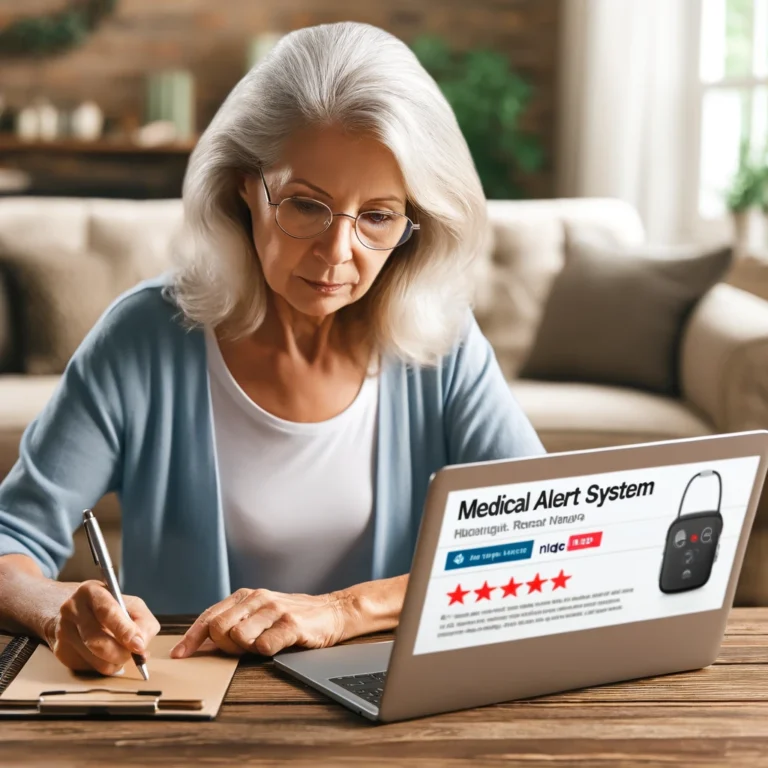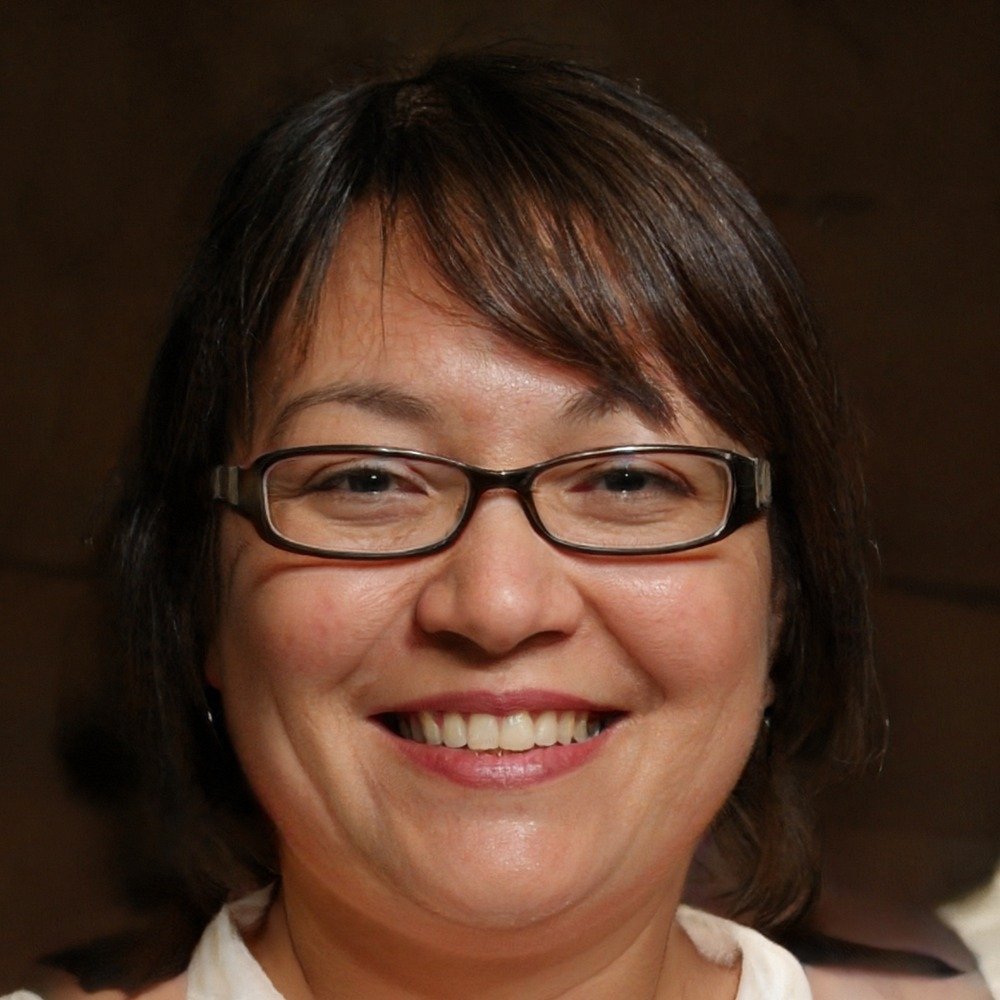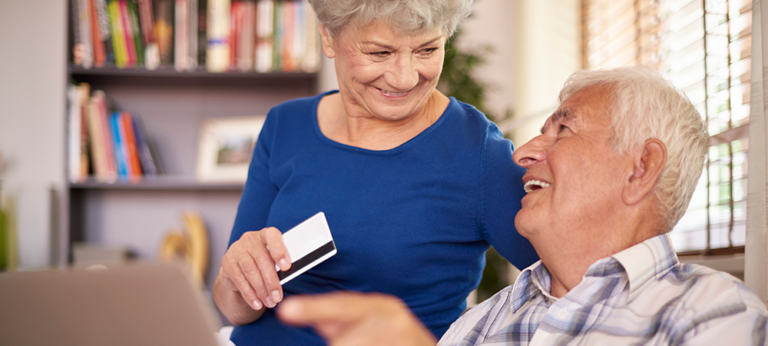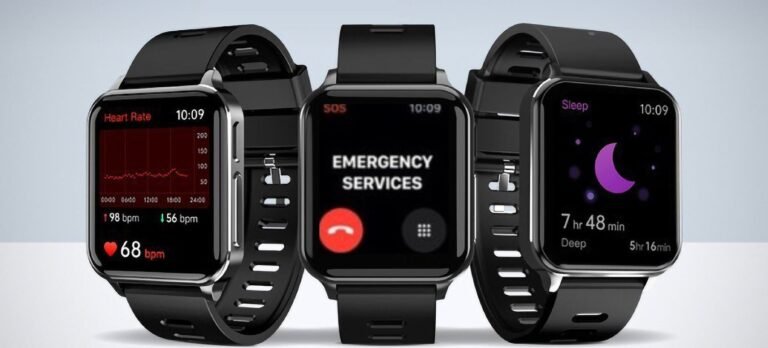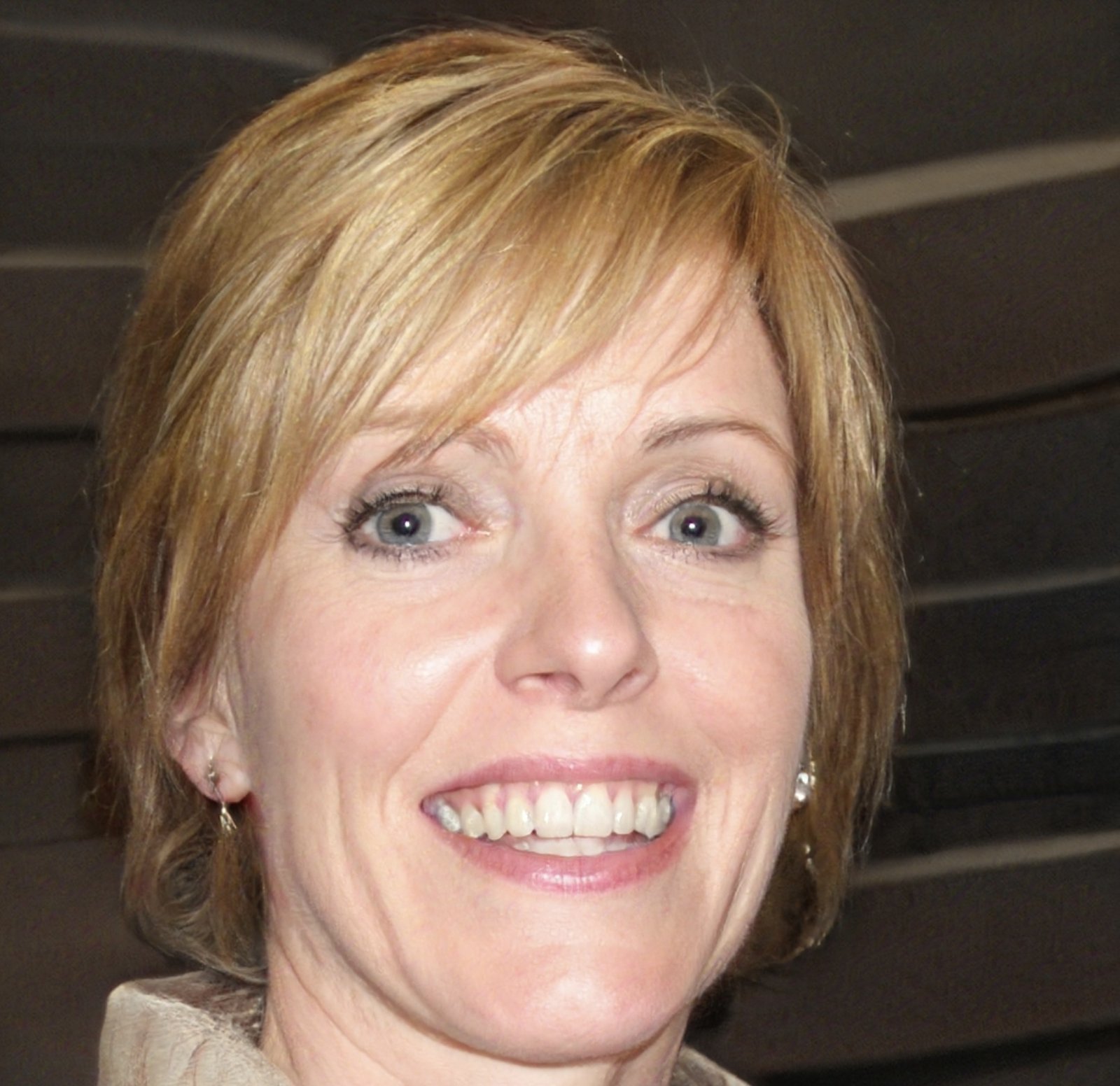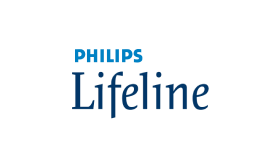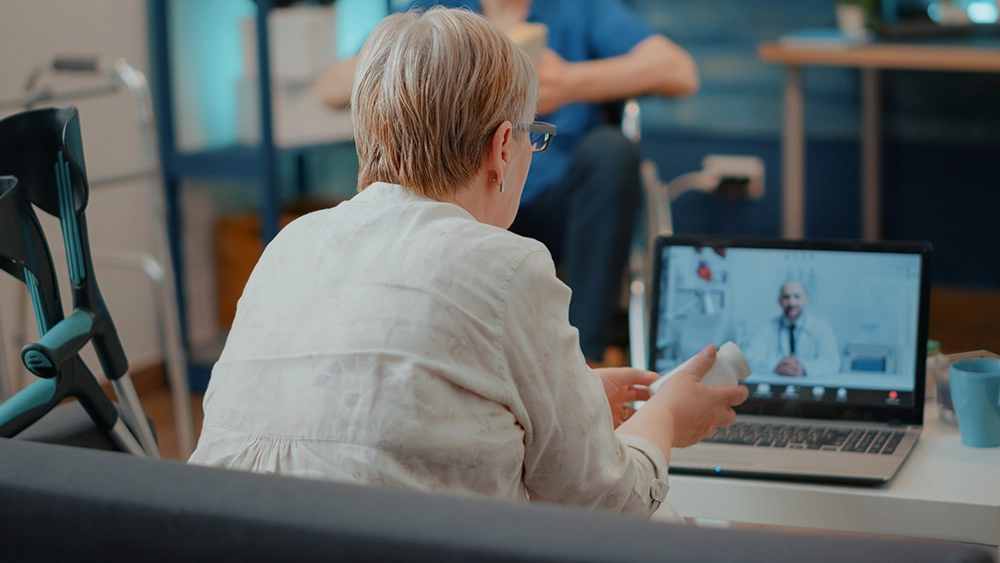
Introduction
Combining telehealth with medical alert systems is revolutionizing elderly care, providing constant health monitoring, on-demand virtual consultations, and rapid emergency support. This all-inclusive model enables seniors to safely age in place while ensuring immediate access to medical assistance when needed. As the aging population grows, these integrated solutions become vital for effectively managing chronic illnesses and enhancing overall quality of life. PubMed research confirms that telehealth significantly boosts health outcomes and minimizes emergency visits, underscoring its value in elderly care.
What is Telehealth?
Telehealth is a healthcare service that enables professionals to provide care remotely using technology like video calls, monitoring devices, and other virtual tools. This approach allows seniors to receive medical support from the comfort of their homes, reducing the need for frequent in-person visits and ensuring they remain connected to healthcare services.
Key Components of Telehealth for Elderly Care:
- Virtual Consultations: Seniors can connect with healthcare providers for medical advice, follow-up appointments, or specialist consultations through video calls, ensuring timely support without leaving home.
- Remote Patient Monitoring: Devices like blood pressure monitors, glucose trackers, and heart rate sensors transmit data directly to healthcare professionals, allowing for continuous monitoring of chronic conditions.
- Prescription Management: Telehealth platforms assist with managing medications, enabling doctors to prescribe, renew, or adjust medications virtually, ensuring elderly patients receive the right dosage and avoid potential complications.
Overview of Medical Alert Systems
Medical alert systems are devices designed to provide immediate assistance to elderly individuals during emergencies, enhancing safety and response times. These systems typically include features such as fall detection, emergency button alerts, and connectivity with caregivers or emergency services, ensuring that help is dispatched quickly when needed.
Functionality
- Fall Detection: Advanced sensors detect when a fall occurs and automatically trigger an alert, even if the individual is unable to press the emergency button.
- Emergency Button Alerts: A wearable or stationary button allows users to call for help instantly, connecting them to a call center or directly to emergency services.
- Integration with Caregivers and Emergency Services: These systems often link to caregivers, medical professionals, or emergency responders, providing location information and critical health data to coordinate swift intervention.
Importance for Elderly
Studies show that medical alert systems significantly reduce emergency response times, which is crucial for outcomes like fall recovery and heart attack interventions. Research also demonstrates that these systems help lower hospital readmission rates by providing timely support and monitoring, ensuring that elderly individuals receive appropriate care before conditions worsen. This not only enhances safety but also supports seniors in maintaining independence at home.
Key Advantages of This Integrated Approach
Integrating telehealth with medical alert systems offers several important benefits that improve elderly care, enhancing safety and independence.
Continuous Health Monitoring
Real-time tracking of vital signs and emergency alerts allows for early detection of health issues, ensuring prompt medical intervention and reducing the risk of complications.
Reduction in Hospital Admissions
Studies indicate that combining remote monitoring with emergency alert systems significantly lowers hospital readmission rates. Early detection and timely response help manage chronic conditions effectively, preventing unnecessary hospital visits.
Enhanced Patient Engagement
Telehealth platforms enable seniors to engage actively in their healthcare through virtual consultations, medication reminders, and self-monitoring. This increased involvement promotes better adherence to medical plans and results in improved long-term health outcomes.
Implementation Tips for Caregivers and Healthcare Providers
Effectively integrating telehealth and medical alert systems requires thoughtful selection, comprehensive training, and seamless integration with healthcare infrastructure. Here’s how caregivers and providers can make the most of these technologies:
Choosing the Right System
Choose a telehealth-enabled medical alert system tailored to the unique requirements of elderly users. Look for key features like fall detection, real-time health monitoring, and intuitive operation. Compatibility with the patient’s existing devices is crucial, and it’s also important to select a provider known for responsive customer service and reliable technical support to ensure smooth functionality.
Training for Caregivers
Training is essential to empower caregivers and healthcare professionals to operate and respond to alerts confidently. Programs should teach caregivers how to read and react to alert data, perform virtual consultations, and execute emergency procedures. With proper training, caregivers become adept at using the technology, guaranteeing prompt and effective support during critical moments.
Integrating with Existing Healthcare Systems
For a streamlined care experience, integrate the system with existing Electronic Health Records (EHRs). This integration allows health data from the alert system to be automatically synced into patient records, providing healthcare teams with a unified view of the patient’s status. This comprehensive approach facilitates coordinated, informed care that adapts swiftly to the needs of the elderly.
Conclusion
Merging telehealth with medical alert systems is transforming elderly care, offering more than just an upgrade—it’s a breakthrough. By combining real-time monitoring, immediate virtual consultations, and swift emergency response, this integrated approach empowers seniors to live independently and securely at home without compromising on quality care. As technology advances, these solutions provide a powerful tool for both seniors and caregivers, significantly lowering hospital visits and enhancing overall health outcomes. Embracing this innovation is crucial for modernizing elderly care, making it more proactive, efficient, and tailored to each individual’s needs.


